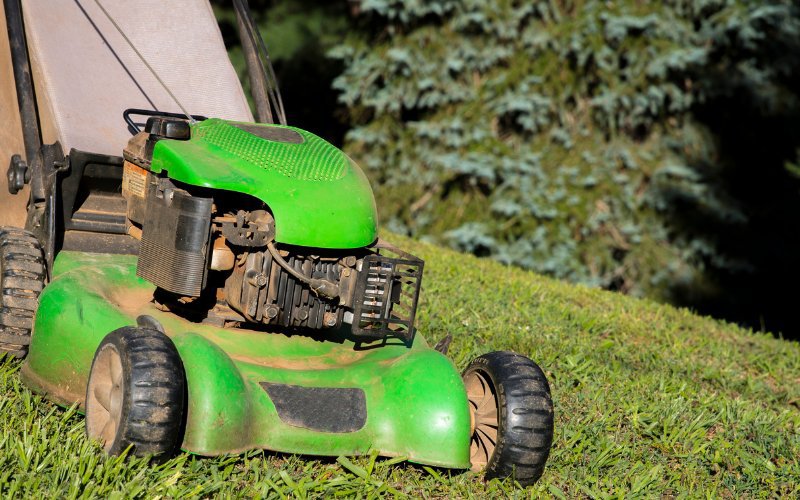Simply by its name, we know that priming the mower is something we should be tackling first. But what exactly is it, and what do you need to do? Priming a lawn mower is the process of adding fuel to a carburetor when there is no fuel in it. Some lawn mowers do this automatically, while others have dedicated primers on the carburetors that require manual attention.
Let’s take a closer look at the manual primer to understand its function and see what steps you need to follow to use it effectively.

Why is Priming Important?
Because carburetors are not sealed components, gasoline evaporates after a period of time, leaving it dry. Without priming the carburetor first, you’ll be pulling the starter with no effect, since there is no fuel to ignite and no pressure to pull fuel.
To overcome this, lawn mowers either have a manual primer or an internal automatic inertia primer to kick-start the engine. Lawn mowers use a fuel pump that relies on the pressure created by the lawn mower. If the engine isn’t running, then pressure isn’t being created.
Pressing the manual primer bulb will add fuel to the carb by sucking gasoline through the fuel system. So priming a lawn mower is necessary if you’re trying to start it when the carburetor is dry.
How to Prime Your Lawn Mower Before Use (Step By Step)
If you have a manual primer bulb, you’ll need to follow a specific starting process in order to start your engine.
Locate the Primer Bulb
Manual primers come in a few different designs, but they are all located down by the carburetor. They are usually clear rubber buttons directly attached to the carb or a rubber button attached to a short fuel line that is attached to the carburetor.
Manual Priming
Once you have located the primer bulb in your lawn mower, give it a firm push. Three pushes is the standard number of times to push the primer bulb. In my experience, this is enough to get the right amount of fuel into the carburetor.
Start the Engine
With the carburetor primed, you are ready to use your starter. Pull the starter one or two times, and your lawn mower should fire up.
Mistakes You Don’t Want to Make When Priming
Even though priming a lawn mower is a simple process, it’s actually easy to get it wrong. Let’s take a look at how this is possible.
Under Priming
If you under-prime the carburetor, you will not have enough fuel for ignition. This will have the same results as not priming at all. If you pull the starter cord two or three and the engine still won’t start, add an extra push of the primer and try starting again.
Over Priming
If you push the primer button too many times, you’ll end up flooding the engine. Too much fuel will be in the combustion chamber, and the spark plug will be too wet to ignite.
I’ve found that leaving the mower to sit for ten or so minutes is enough time to allow the excess fuel to evaporate.
Once you have left the mower to sit long enough, try starting it again without priming first. If this fails, then start the priming process again, just this time with fewer pushes of the primer bulb.


Can’t prime my mower. When I push the button it doesn’t come back out. What do I do?
Hi Den,
It sounds like you need to replace the priming bulb. When the bulbs get old, the rubber becomes stiff and less flexible. The flexibility is what makes the bulb return to its original shape. You should be able to pick up a new bulb for just a few bucks at your mower supply store or online.
I hope this helps.
Cheers, Tom.
Hi Tom,
I recently changed the carburetor on my Mountfield SP154. The engine runs really well now but needs a single prime each time it stops, even when warm. All other mowers I have had only needed priming for the first start when cold.
Any suggestion as to why the mower needs a consistent ‘squirt’ to get it running? Thanks
Hi Warren,
Primers are there to push fuel into the carburetor due to the lack of an electric fuel pump. Fuel evaporates out of the carb when it’s not being used and leaves the carb dry. I’m guessing that your Mountfield is stopping fuel flow prior to the final combustion of the engine.
I would think that this could be because there is a slight difference in the design of the new carburetor compared to the original or that there is a slight difference in fuel delivery. There could be a little too much air and not enough fuel. A small adjustment in the air-to-mixture could be needed on the idle setting.
I’m sure that with a little adjustment, you will not need the extra priming.
Good luck!
Tom.